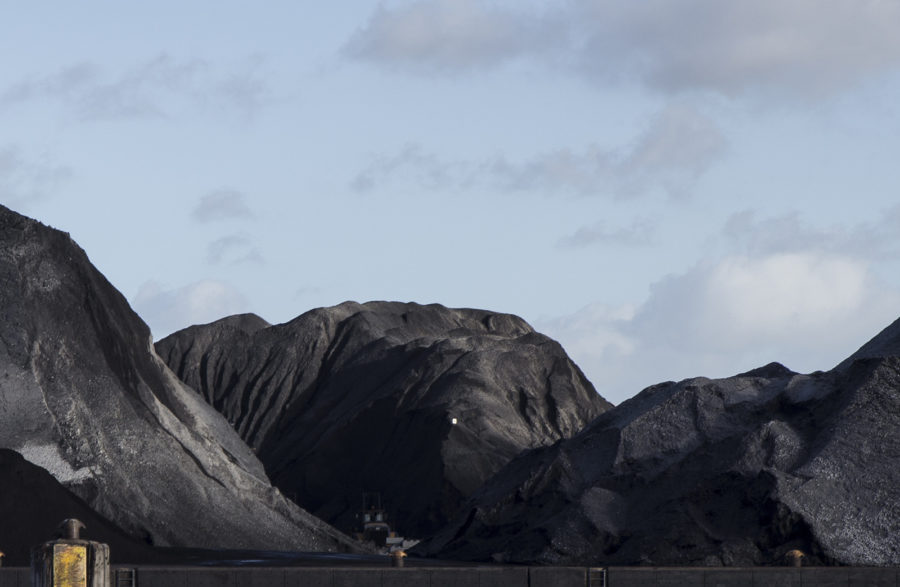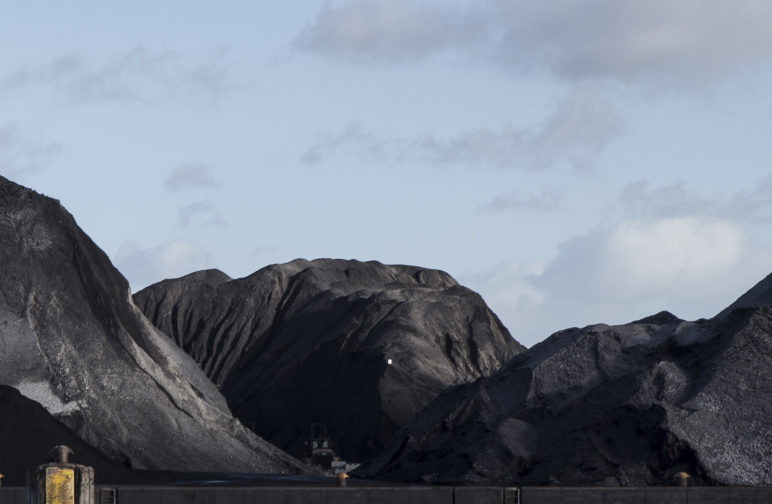In another sign of the collapsing prospects for West Coast coal exports, Cloud Peak Energy—one of the largest coal producers in the American West and the best positioned coal exporter in the vast Powder River Basin—recently announced that it had extricated itself from long-term contracts to move coal into Pacific Rim markets. It was a costly retrenchment: the company gave up nearly $10 million that was held in escrow accounts and still committed to make at least $51 million in payments to rail and port companies over the next two years.
But despite the costs, industry analysts generally cheered the move. As well they should have: under its prior contracts, Cloud Peak had committed to pay $475 million in port and rail fees between 2019 and 2024, even if the company didn’t ship a single ton of coal to Asia.
Canceling these export contracts represented a remarkable about-face for the company. As recently as mid-2013, Cloud Peak executives practically bubbled with optimism about the company’s bright prospects for exporting coal into burgeoning Pacific Rim coal markets, boasting to investors that they had made Asian exports the centerpiece of their corporate growth strategy. The company ultimately committed hundreds of millions of dollars to an ambitious, multi-pronged export strategy, which included:
- Long-term contracts with rail company BNSF to ship coal from its Powder River Basin mines to the coastal coal terminals;
- Long-term contracts with the Westshore export terminal in southwestern British Columbia to load coal onto ships bound for Asia;
- A 49 percent stake in the proposed Gateway Pacific coal export terminal outside Bellingham, Washington;
- Port access rights at the proposed Millennium Bulk Terminal in Longview, Washington;
- Development of two new export-oriented coal mines in the Powder River basin.
That strategy has almost completely unraveled. China’s coal demand, which once looked limitless, has fallen for three consecutive years, driven by government policies designed to rein in pollution and modernize the nation’s economy. As Chinese coal demand waned, prices fell—submerging Cloud Peak’s export business in a sea of red ink. By late 2015 Cloud Peak’s export losses were mounting so rapidly that the company decided it would actually be cheaper to pay shipping partners not to ship coal—a move that forced the company’s accountants to completely write off the value of its export contracts and port rights.
The coal export pipe dream continues to fade away, leaving a bad hangover on coal industry’s balance sheets and a lingering bad taste in the mouths of coal investors and executives alike.
At the same time, politics also took its toll on Cloud Peak’s export ambitions. Last May the US Army Corps of Engineers halted the Gateway Pacific terminal, citing concerns over Native American treaty rights; the company backing the terminal gave up its fight for the project last month. And last December the state of Washington denied a critical sublease to the Millennium terminal, arguing that the project’s backer failed to provide information about its business plan—information that may well have shown that there wasn’t a viable business plan, given the dismal state of international markets, plus the fact that the terminal’s sole remaining partner pulled out of the project after declaring bankruptcy. (And as a side note, the terms of Cloud Peak’s new contracts undermine Millennium’s prospects still further: Cloud Peak gave the Westshore terminal the right of first refusal for coal export shipments through 2024, which would deny Millennium a key potential customer.)
Cloud Peak’s bad luck streak eased a bit last fall, after government-mandated cutbacks in Chinese coal production breathed some life into torpid coal markets. As seaborne coal prices ticked upwards Cloud Peak managed to sign contracts to ship more than a million tons of coal to Korea. It was a far cry from the multi-million-ton export business the company had previously banked on—but much better than paying steep fees to export nothing at all, as the company had done for most of the previous year.
Still, it’s clear that the years of red ink, political losses, and painful asset write-downs have dashed Cloud Peak’s confidence in its export strategy. In his last investor call, the company’s CEO conceded that international competitors would always have a leg up on Cloud Peak in Asian markets:
I think realistically, we’re never going to be at the low—the bottom of the cost curve internationally because of just the distance we are from the coast and compared to Indonesia and to the customers compared to Indonesia. So, we need to recognize that and position ourselves accordingly.
And even though international coal prices are much higher now than they were a year ago, the company acknowledged that Pacific Rim coal futures prices are still too low for the company to lock in long-term profits. Moreover, Cloud Peak’s executive team seems to recognize that Pacific Rim coal prices are driven almost entirely by the whims of Chinese policymakers—and that counting on Beijing to be nice to the US coal industry is a sucker’s game. These developments help explain why Cloud Peak has removed Asian exports from the center of its corporate strategy, even as the company has begun to search for new domestic customers to replace its lost export opportunities.
I have to think that Cloud Peak’s executives once imagined themselves as rising stars in the international coal game. But they’ve finally admitted to themselves that they are bench players at best: shipping a bit of coal when prices are high, but otherwise sitting on the sidelines.
The same is true for the rest of the coal industry in the US West. Robust, sustainable Asian coal markets were never a realistic hope for US coal exporters: the transportation costs were too high, the competition too fierce, and the demand too unstable. So the coal industry’s PR flacks may continue to spin tales about endless riches in the Asian coal market, the financials are telling a much more sobering story: that the coal export pipe dream continues to fade away, leaving a bad hangover on the coal industry’s balance sheets and a lingering bad taste in the mouths of coal investors and executives alike.












Comments